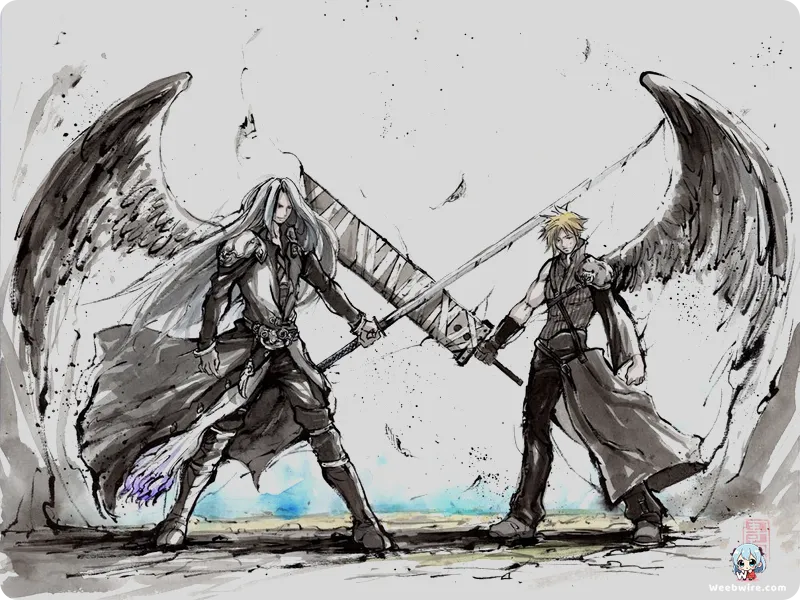Final Fantasy VII: Advent Children – A Deep Dive into the CGI Masterpiece and Its Enduring Legacy

More than merely a follow-up, Final Fantasy VII: Advent Children emerged in 2005 as a landmark achievement in computer-generated imagery, uniquely bridging the expansive narrative of one of gaming's most cherished sagas. This feature-length film, a pioneering venture into full CGI rather than traditional hand-drawn animation, dramatically pushed the visual envelope for direct-to-video releases of its era. Its core mission was to advance the compelling story of Cloud Strife and his allies, picking up two years after the climactic events of the original Final Fantasy VII game, a narrative decision that instantly set it apart from conventional anime adaptations.
The very existence of Advent Children as a high-budget, cinematic sequel to a video game eschewing a new game or animated series underscored Square Enix's profound ambition and unwavering commitment to the Final Fantasy VII universe. This bold move acknowledged the immense fan devotion and the fervent desire for deeper immersion into its rich lore. It proudly served as the flagship initiative for the 'Compilation of Final Fantasy VII', a sprawling multimedia project crafted to expand and enrich the foundational game's narrative. This distinctive positioning demanded the film simultaneously cater to a devoted, established fanbase while delivering a compelling, standalone cinematic experience.
A Testament to Visual Meticulousness
A testament to the production's meticulousness lies in the extraordinary detail invested in character models and environmental textures. The Square Enix team went to unparalleled lengths, ensuring iconic figures like Cloud, Tifa, and Sephiroth were not only instantly recognizable but also boasted unprecedented levels of photorealism for the time. Cloud Strife's signature spiky hair, for instance, underwent countless iterations to perfect its distinctive flow, showcasing the rigorous animation process. His legendary Buster Sword also received a significant overhaul, evolving into the multi-component Fusion Swords, a design choice enabling incredibly dynamic and visually complex combat sequences that further highlighted the animators' ingenuity.
Revolutionary Action Choreography
The film's action choreography is another area rich with fascinating insights. Fight sequences, particularly Cloud's intense clashes with Kadaj, Loz, and Yazoo, culminating in the epic showdown with Sephiroth, are celebrated for their breathtaking fluidity and intensity. Reports indicate that these sequences necessitated an astronomical number of animation frames and intricate motion capture work. The sheer speed and precision of character movements, coupled with their acrobatic prowess, established a new benchmark for CGI action. The exhilarating motorcycle chase through the city, with Cloud masterfully maneuvering his Fenrir bike while battling supernatural adversaries, remains a masterclass in animated vehicular combat.
Profound Psychological Depths
Beyond its visual spectacle, Advent Children delves into the profound psychological aftermath of the original game's events. Cloud Strife's struggle with Geostigma, a mysterious new affliction, serves not merely as a physical ailment but as a potent metaphor for his lingering guilt and self-doubt following his inability to save Aerith Gainsborough. The film subtly explores powerful themes of atonement, legacy, and the quest for purpose, adding profound layers to characters fans believed they knew intimately. This emotional depth, masterfully interwoven with high-octane action, was a deliberate choice designed to resonate deeply with fans who had grown up alongside these characters.
The Definitive 'Complete' Edition
Fans frequently engage in discussions comparing the original DVD release with the later 'Final Fantasy VII: Advent Children Complete' Blu-ray version. The 'Complete' edition, launched in 2009, stands as a veritable treasure trove of additional content and significant refinements. It features approximately 26 minutes of new and extended scenes, providing vital context, enhanced character development, and crucial plot clarification that many felt were absent from the initial release. For instance, the 'Complete' version offers a more explicit explanation of Geostigma's origins and a more satisfying resolution for specific character arcs. It also boasts enhanced visuals, improved lighting, and re-edited sequences, firmly establishing it as the definitive viewing experience for dedicated fans. This extended cut powerfully demonstrates Square Enix's unwavering commitment to refining and perfecting their creative vision long after the initial release.

The Enduring Power of Music
Music, too, plays an indispensable role in the film's enduring appeal. While Nobuo Uematsu, the revered composer of the Final Fantasy series, was not the sole composer for Advent Children, his iconic themes were expertly re-arranged and seamlessly integrated into the new score. Hearing beloved melodies like 'One-Winged Angel' and 'Aerith's Theme' reimagined with a modern orchestral and rock sensibility infused immense emotional weight and nostalgia. This harmonious blend of new compositions with classic motifs forged a soundscape that felt both remarkably fresh and deeply familiar, further cementing the film's profound connection to its gaming roots.
In essence, Final Fantasy VII: Advent Children transcends the definition of a mere film; it stands as a powerful testament to the enduring influence of a story and its characters. It vividly showcases Square Enix's pioneering spirit in CGI animation, their unwavering dedication to satisfying a devoted global fanbase, and their uniquely innovative approach to expanding a beloved universe. Its profound legacy rests not only in its groundbreaking visual splendor or its exhilarating action sequences but, more importantly, in its remarkable ability to revisit and enrich the emotional core of Final Fantasy VII, offering fans a truly unique and unforgettable continuation of a timeless saga.
Credits
Final Fantasy VII: Advent Children
Author
Tetsuya Nomura
Cover Art
Tetsuya Nomura
Studio
Square Enix
Publisher
Square Enix
Producers





